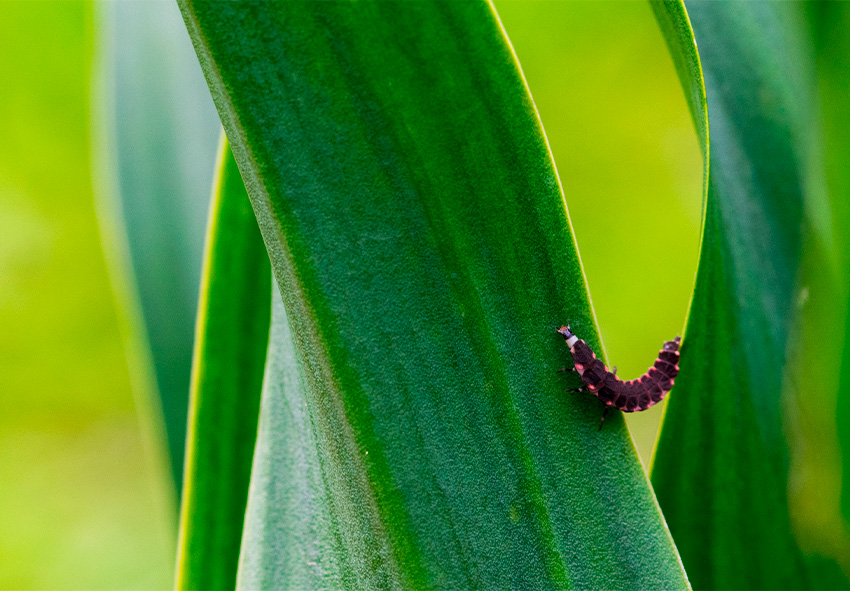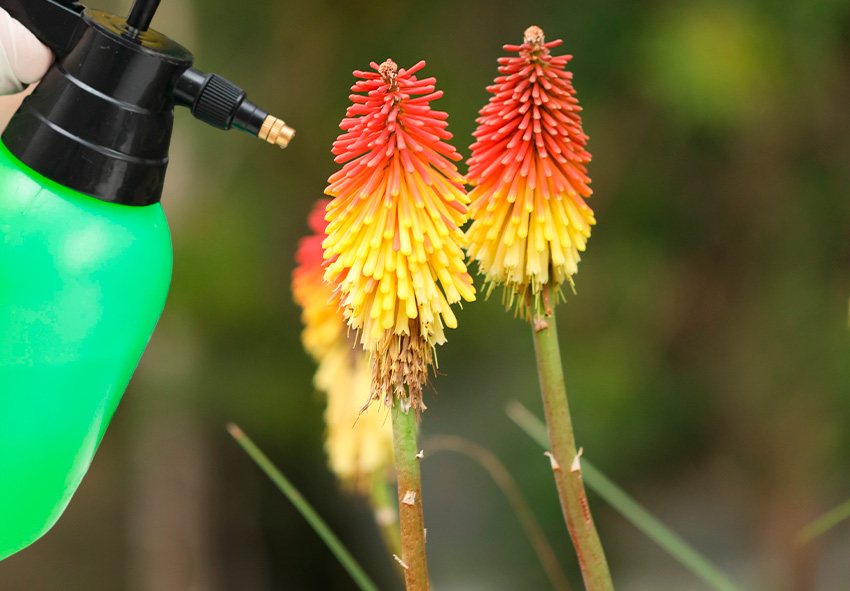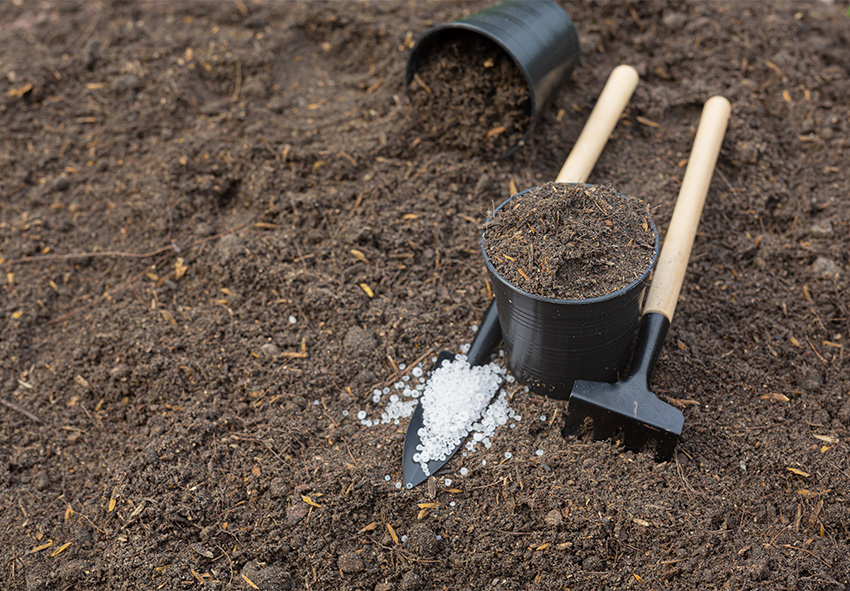Kniphofia, commonly known as Red Hot Poker, is a striking addition to any garden with its vibrant, torch-like flowers. However, maintaining the health and beauty of these plants requires vigilant pest control. Pests can cause significant damage, reducing the plant’s vigor and flowering potential. Implementing effective pest management strategies is crucial for the healthy growth of Kniphofia. Find more useful information on our gardening blog.
Common Pests Affecting Kniphofia

Kniphofia plants, known for their striking flowers, can be susceptible to various pests that can hinder their growth and beauty. Identifying and understanding these common pests is essential for effective management and prevention. This section explores the typical culprits, including aphids, spider mites, slugs, snails, and thrips, detailing their impact on Kniphofia plants and how to recognize the signs of an infestation.
- Aphids: Aphids are small, soft-bodied insects that can infest Kniphofia, sucking the sap from the plant and weakening it. These pests are typically found on the undersides of leaves and can cause leaves to curl, yellow, and stunt the plant’s growth. A sign of aphid infestation is a sticky substance called honeydew, which can attract ants and promote the growth of sooty mold.
- Spider Mites: Spider mites are tiny arachnids that can cause significant damage to Kniphofia by feeding on the plant’s sap. They often go unnoticed until their damage becomes evident, such as tiny yellow or white spots on the leaves and a fine webbing under the foliage. Early detection is crucial as spider mites can quickly spread and become a severe problem.
- Slugs and Snails: Slugs and snails pose a considerable threat to Kniphofia, especially young plants. They feed on the foliage, creating irregular holes in leaves and sometimes even damaging the flowers. Their presence is often signaled by slimy trails on the soil and leaves.
- Thrips: Thrips are small, slender insects that feed on Kniphofia by puncturing the plant cells and sucking out the contents. This feeding behavior leads to distorted, discolored leaves and flowers. The damage often appears as silvery streaks or spots, and severe infestations can reduce the plant’s overall vigor.
Preventative Measures for Pest Control
Preventing pest infestations is the best strategy to ensure the health and longevity of Kniphofia plants. Implementing cultural practices, using biological controls, and setting up physical barriers can significantly reduce the likelihood of pest problems. Additional tips are available in a full guide for Kniphofia. This section discusses how to create an environment less hospitable to pests and the role of natural predators in maintaining garden health.
Cultural Practices
Good cultural practices are the foundation of pest prevention. Proper spacing of Kniphofia plants ensures good air circulation, which reduces the humidity levels that many pests thrive in. Regularly inspecting plants and maintaining garden hygiene, such as removing dead or diseased plant material, can help prevent pest infestations.
Biological Controls
Biological controls involve using natural predators to manage pest populations. Implementing biological controls can be an effective and environmentally friendly way to manage pests on Kniphofia plants. Here are some key strategies:
- Beneficial Insects: Ladybugs, also known as ladybirds or lady beetles, feed on aphids and other small pests, reducing their populations naturally. At the same time, lacewing larvae are voracious predators of aphids, spider mites, and thrips.
- Natural Predators: Birds can help control insect populations, particularly caterpillars and beetles, while frogs and toads consume a wide variety of garden pests, including slugs and snails.
- Using Parasitic Wasps:Certain species of parasitic wasps lay their eggs in or on pest insects, such as aphids, leading to the natural reduction of these pests.
- Companion Planting: Planting species that attract beneficial insects (e.g., dill, fennel, or marigolds) can help enhance the natural pest control ecosystem in the garden.
- Maintaining a Diverse Ecosystem: Encouraging a variety of plants and wildlife in the garden can create a balanced ecosystem, reducing the likelihood of pest outbreaks.
Biological controls not only help manage pests but also contribute to a healthier and more sustainable garden environment.
Physical Barriers
Physical barriers are an effective way to protect Kniphofia from pests like slugs and snails. Copper tape can be placed around pots or garden beds to deter these pests, as they dislike crossing copper. Cloches and netting can also be used to physically block pests from accessing the plants.
Treatment Options for Infested Plants

Even with preventative measures, Kniphofia plants may occasionally suffer from pest infestations. Addressing these issues promptly with the appropriate treatment methods is crucial to prevent further damage. This section covers various treatment options, including organic solutions like insecticidal soaps and neem oil, as well as chemical treatments for more severe infestations, emphasizing safe and effective application practices.
Organic Solutions
Organic pest control methods are preferred for their minimal environmental impact. Insecticidal soaps and neem oil are effective against a range of pests, including aphids and spider mites. These treatments work by suffocating the pests or disrupting their feeding and reproduction processes.
Chemical Treatments
When pest infestations are severe, chemical treatments may be necessary. Selecting pesticides that are safe for use on ornamental plants like Kniphofia and following label instructions carefully ensures effective and safe application. Always consider the impact on beneficial insects and the surrounding environment when using chemical controls.
Monitoring and Maintenance
Regular monitoring and maintenance are vital for the ongoing health of Kniphofia plants. Early detection of pest problems can save plants from extensive damage and reduce the need for chemical treatments. This section highlights the importance of routine inspections and long-term strategies for promoting robust plant health, including soil management and garden biodiversity.
Regular Inspections
Regular inspections are essential for early detection of pests. Gardeners should routinely check the undersides of leaves, stems, and flowers for signs of pests or damage. Early intervention can prevent minor issues from becoming significant infestations.
Long-term Plant Health Strategies

Maintaining the long-term health of Kniphofia plants requires a combination of proper care, environmental management, and proactive measures. Here are some key strategies:
1. Soil Health and Fertility:
- Regular Soil Testing: Conduct soil tests periodically to monitor nutrient levels and pH balance. Amend the soil as needed with organic matter or specific nutrients to maintain optimal growing conditions.
- Composting and Organic Mulching: Incorporate compost and organic mulches to improve soil structure, enhance nutrient availability, and retain soil moisture.
2. Appropriate Watering Practices:
- Consistent Watering: Provide consistent moisture, particularly during dry spells, but avoid overwatering, which can lead to root rot and other issues.
- Drip Irrigation or Soaker Hoses: These methods help deliver water directly to the root zone, minimizing water waste and reducing the risk of fungal diseases.
3. Proper Plant Spacing and Pruning:
- Adequate Spacing: Ensure proper spacing between plants to promote air circulation, reducing the likelihood of fungal infections and pest infestations.
- Pruning and Deadheading: Regularly prune and remove dead or diseased plant material to encourage healthy growth and prevent the spread of diseases.
4. Integrated Pest Management (IPM):
- Monitoring and Early Detection: Regularly inspect plants for signs of pests or disease and address issues promptly to prevent widespread problems.
- Use of Natural Predators and Biological Controls: Incorporate beneficial insects and other biological control methods to manage pest populations naturally.
5. Diverse Planting and Crop Rotation:
- Plant Diversity: Incorporate a variety of plants in the garden to attract beneficial insects and create a balanced ecosystem. This diversity can help reduce the risk of pest outbreaks.
- Crop Rotation: Rotate plants in different garden areas each season to prevent soil-borne diseases and pest cycles from becoming established.
6. Environmental Considerations:
- Climate-Appropriate Planting: Choose plant varieties that are well-suited to your local climate and conditions, which can reduce stress and susceptibility to pests and diseases.
- Sustainable Practices: Use eco-friendly gardening practices, such as reducing chemical pesticide use and promoting biodiversity, to support a healthier garden environment.
7. Education and Community Engagement:
- Stay Informed: Keep up to date with the latest gardening practices and pest control methods through workshops, gardening clubs, and online resources.
- Community Sharing: Engage with local gardening communities to share knowledge, resources, and experiences, which can enhance collective garden health.
Conclusion
Effective pest control is crucial for maintaining the health and beauty of Kniphofia plants. By combining preventative measures, biological controls, and targeted treatments, gardeners can protect their plants from common pests and enjoy a vibrant, thriving garden. Implementing these strategies not only benefits Kniphofia but also contributes to the overall health of the garden ecosystem.
Frequently Asked Questions (FAQs) about Kniphofia Pest Control
1. How can I identify an aphid infestation on my Kniphofia plants?
Aphid infestations are often identified by clusters of small, soft-bodied insects on the underside of leaves and stems. Affected plants may show symptoms such as curled or yellowing leaves, stunted growth, and sticky honeydew deposits.
2. What are some natural methods for controlling pests on Kniphofia?
Natural methods for controlling pests include introducing beneficial insects like ladybugs and lacewings, which prey on aphids and other pests. Additionally, using organic sprays like neem oil or insecticidal soap can help manage pest populations without harming beneficial insects.
3. When should I use chemical pesticides on my Kniphofia plants?
Chemical pesticides should be used as a last resort when other methods are ineffective. It’s important to choose a pesticide that is specifically labeled for the pest and plant in question and to follow all application instructions carefully to minimize harm to the environment and non-target organisms.
4. Can Kniphofia bulbs be ordered from your online store?
Our online store Dutch-bulbs.com offers a wide selection of Kniphofia bulbs in various colors, making it easy for you to add these elegant beauties to your garden. We source our bulbs from reputable growers to ensure you receive high-quality specimens. Simply browse our online catalog, select your preferred varieties, and follow the easy ordering process.
5. How often should I inspect my Kniphofia plants for pests?
Regular inspections are crucial for early pest detection. Check your Kniphofia plants weekly during the growing season for signs of pests or damage. Early intervention can help prevent pest populations from becoming established and causing significant harm.
Published: 31.07.2024
